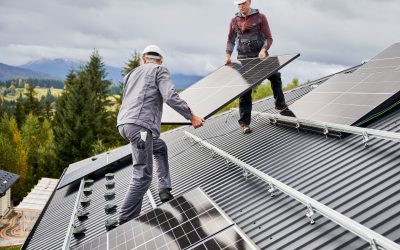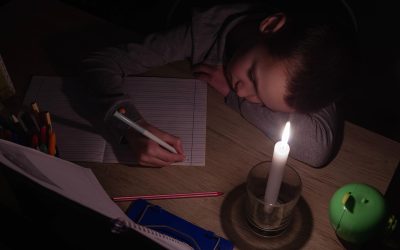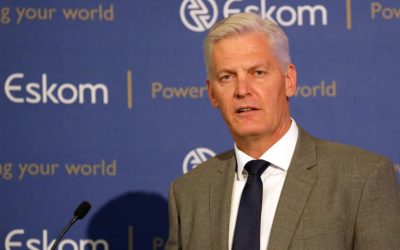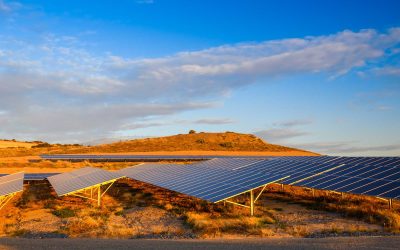South Africa is currently going through its worst bout of load shedding yet. Eskom power stations are failing one after the other. This has, of course, brought attention to the energy situation in the country and it has caused many people to look for solutions both for their own private circumstances as well as for what we should do as a country. I’d like to add my views to the conversation and talk about solutions to load shedding both for private individuals as well as at a national level.
Private Solutions
Firstly, for private individuals. There is a misconception out there that in order to have power during load shedding, one needs to install solar power. Solar power is not a solution to load shedding. It is a solution to reducing high energy costs. As an energy consultant, I often meet clients to present solar as a solution for high energy costs and they tell me, “I already have a generator,” or “I already have batteries.” When people talk about load shedding in social settings or on social media, you often hear the line, “We should just get solar.” Again, solar is not a solution to load shedding; it is a means of reducing high energy costs.
Why is solar not a solution to load shedding? Firstly, if you just have solar panels and your system is grid-tied, when there is load shedding your solar panels will also stop providing electricity to your home or business premises. Grid-tied systems need the grid to be online in order to supply power. The grid acts as a buffer against the variability of the energy coming from the sun and so grid-tied inverters are built to require the grid to be available in order to supply power from the solar panels.
Also, if your solar panels are producing power when the grid is off, there is a possibility for electricity to flow into the grid. This is dangerous. The grid might be off, not for load shedding, but for maintenance. If someone is working on those power lines, they could be electrocuted if your solar panels supply electricity to the grid. So, switching off when the grid is down is also a safety feature.
You could get an off-grid inverter that still provides solar power to your premises when there is load shedding. It can switch over between grid power and solar power and break the connection to the grid, much like a generator. But during times of high cloud cover, or at night, you will still be susceptible to load shedding. So, you have not solved the problem. Solar is not the solution to load shedding; it is mainly for cost saving because solar power is cheaper than power from Eskom or your municipality.
The Solution for Homes and Businesses
So, what is the solution? It’s really simple. To have power when there is load shedding you need batteries or a generator. During times when Eskom power is available, your batteries will charge. During load shedding, you can power your premises with batteries. Batteries tend to be quite expensive though. Another option is to use a generator. This tends to be much cheaper, even with the high fuel costs. Also, generators last much longer than batteries. The best is to have an optimal combination of batteries and a generator to keep costs at a minimum while ensuring convenience.
Generators tend to be noisy and bulky. But there are solutions to this problem. You can build or buy an enclosure for your generator to keep it safe and reduce the noise. You could also have a permanent line connected to your building from the generator so that you don’t need to move it around. Some generators even come with remote electric start. So, you could switch over to generator power with little inconvenience.
If you have a generator or you have batteries, you could then decide to get solar panels. But this is purely optional and it’s for saving on electricity costs to charge your batteries and saving on fuel used by your generator. This combination also takes you a step closer to being off-grid. But again, solar is not needed as a solution to load shedding.
At A National Level
At a national level, however, solar is the solution to our load shedding issues. But, not just solar. We need a combination of wind and solar. Eskom is currently experiencing a shortfall in capacity of up to 6000 MW. That’s over 1000 MW more than either Medupi or Kusile’s capacity. To meet this shortfall and to provide for future energy requirements, Eskom would need to build at least another Medupi and Kusile. The bad news is that Medupi and Kusile took around 15 years to construct. If we were to meet our capacity shortfall by building another Medupi and Kusile, we’ll be stuck with load shedding for the next 15 years!
The good news is that South Africa is fortunate to have some of the best solar and wind resources in the world! Also, solar farms and wind farms do not take a long time to build. They take around 2-5 years, and most of this time is spent in permitting and other regulatory activities. In 2016, the CSIR did a study that showed that we can run the country on over 70% solar and wind, provided that the plants are spread out, and we build some flexible generation like gas, CSP, or storage. We don’t need a lot of flexible generation. Just enough to do some demand and supply matching.
We have enough resources available in the country to get there. Grid specialists have advised that our grid is capable of handling more renewables and will continue to improve. We have the forecasting technology to know how much sun and wind power we will be generating, with enough lead time for planning. And we have many independent power producers ready to get to work to build these plants. So, we don’t have to rely just on Eskom. 100MW of wind here, 100MW of solar there, a little bit of gas and storage here and there, scores of IPPs ready to implement, and within 2-5 years, we will have eliminated our load shedding issues.
Unintended Consequences
Renewables are the cheapest and quickest way to get electricity online. The private sector knows this. If we don’t build more wind and solar, combined with flexible generation, at a national level. The private sector will continue to procure their own. This puts Eskom in a tricky situation: they will have to have the capacity to supply the private sector in times when there is little or no sun and wind. But, most of the time, this capacity will not be in use. This has the unintended consequence of making electricity more expensive for the general public since we will be paying for capacity that is not producing an income for Eskom.
So, either we procure solar and wind, with flexible generation, at a national level. Or the private sector will do so, with the negative implications. Either way, the way forward is more renewables.
So again, batteries or a generator in your private capacity. Solar, Wind, and some flexible generation at national level. We’ll get through this with the right thinking and planning.













